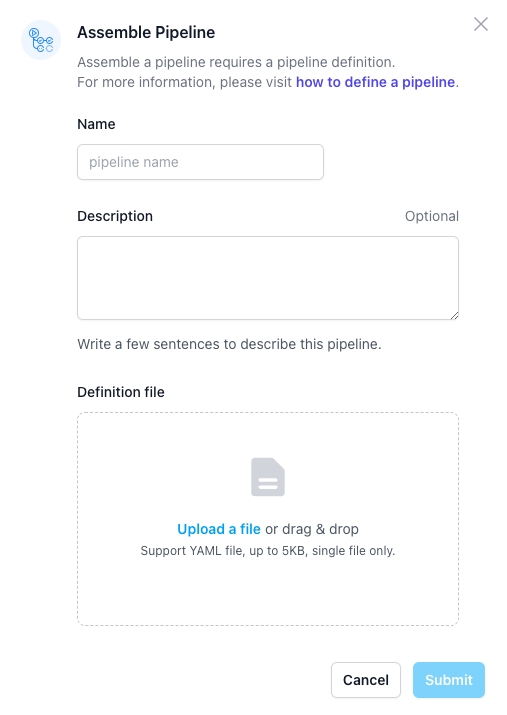Managing Test Pipeline
Overview
Understanding a Qualified Test Pipeline
A qualified test pipeline is a series of automated tests that are executed in a specific sequence to validate the functionality, performance, and security of an application. A well-designed test pipeline should be comprehensive, efficient, and easily maintainable. It should cover various aspects of the application, from unit tests to integration and end-to-end tests, ensuring that the software is robust and ready for production.
Test Pipeline on Testany Platform
Understanding the Concepts of Test Pipeline on Testany Platform
Definition (You may refer back to Glossary)
In our product, a "Test Pipeline" is a feature for implementing automated testing. It consists of a series of predefined automated testing cases that are triggered by various test frameworks and can be executed in a specific order and logic. The goal of the Test Pipeline is to continuously verify the quality and performance of the product or system. Each execution produces test results, which can be reviewed in “Executions” and pushed to Watchers.
Test Pipeline YAML
Testany Platform uses YAML files to define the structure and sequence of a test pipeline. The YAML file specifies the test cases to be executed, their order, and any conditional logic that may be involved. This makes it easy to version-control your test pipelines and integrate them into your CI/CD process. Please read the Test Pipeline Writing Guideline and Samples.
Assemble Test Pipeline
Select a workspace: from the ‘workspace’ dropdown list at the top bar .
Navigate to the Pipeline Section: Go to the 'Pipelines' tab on the left-side bar.
Assemble a New Pipeline: Click on the 'Assemble pipeline' button at the top right corner of the page.
Key in necessary information: include name (mandatory), description (optional), etc.

Upload test pipeline YAML: Drag and drop the .yaml file to the ‘Definition file’ box, then click on ‘Submit’ button
Review tese pipeline meta: include env., flow diagram and test case list. If all right, click on ‘confirm’ to complete assembling the pipeline.
Please note the platform will allocate a pipeline key for you in the format of {workspace key}-{4 digits auto-incrementing number}, this key is the unique ID of this pipeline on Testany Platform. You may check the key in pipeline list and pipeline detail page. This key is very important.
Read Test Pipeline
Access Existing Pipelines: Navigate to the 'Pipelines' tab to see a list of all your existing pipelines.
Select a Pipeline: Click on the pipeline you wish to read.
View Details: The platform will display the structure, test cases involved, and the sequence in which they are executed.
Update Test Pipeline
Please note: only the creator of the pipeline can update it.
Select Pipeline to Update: Go to the 'Pipelines' tab and click on the pipeline you want to update.
Repeat #4-6 in the ‘Assemble test pipeline’ section.
By understanding and effectively managing test pipelines on the Testany Platform, you can ensure that your software is rigorously tested, reliable, and ready for deployment in any environment.
